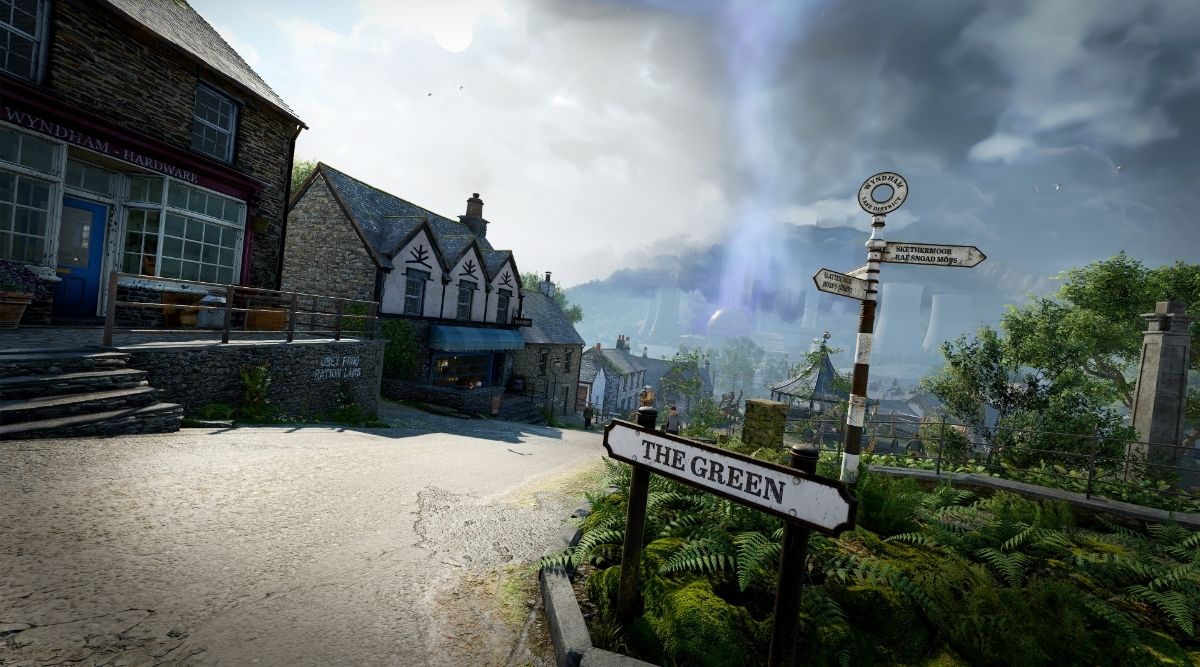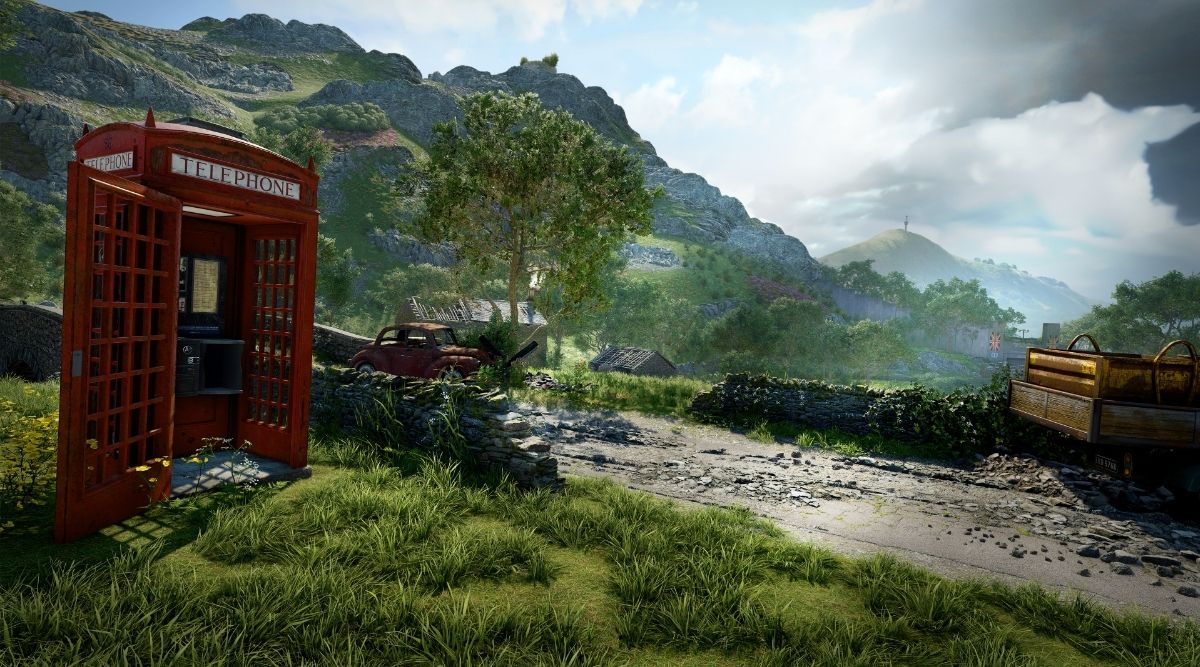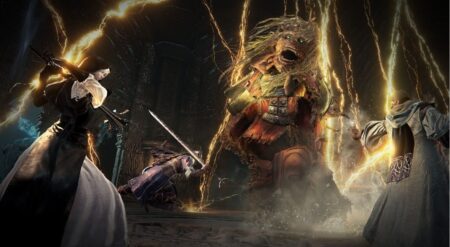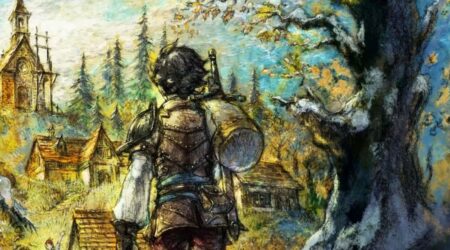Imagine waking up with no memory, in a mysterious land, an eerie glow in the distance, and 1950s English Punks walking around ready to slaughter you. All you have is a phone call telling you to destroy a mysterious thing. That is the setting of Rebellion Developments’ latest game, Atomfall—a survival post-apocalyptic action adventure game set in the English countryside. While there have been apt comparisons to other post-apocalyptic survival games, Atomfall sets itself up to be a more narrative-driven survival experience, letting you take charge of your own journey through a quarantine zone after the 1957 Windscale Nuclear Disaster caused by a mysterious incident.
You play as a mysterious survivor with amnesia. Your past is unknown, and why you’ve woken up in a bunker is even more of a mystery. All you have is a militaristic survivor being your guide to escape this bunker and enter the quarantine zone where nobody can get in or out. Upon your escape from the bunker, you’re greeted by a call in a red telephone booth telling you to “find the Interchange and destroy Oberon,” and nothing more.
Who is Oberon? What is the Interchange? Why is this whole area quarantined? Should you even trust this mysterious voice at the other end of the phone? All these questions are yours to discover as you explore this quarantine zone where nothing, not even the rest of the survivors, is as it seems.
Atomfall does an excellent job of leaving the story and how it plays out up to you. Nobody appears to explain to you what’s going on. That’s all on you. It’s left to your exploration skills and curiosity to learn more about Windscale and its residents. Plus, with numerous branching paths and many key characters, the story is ultimately up to you to shape. And that spins from who you are as a player and what you want your self-insert to be.
Atomfall is a truly self-insert survival experience.

Atomfall does an excellent job of making this survivor truly a self-insert. The less I learn about them, the better. Even after wondering about how this person got into this bunker, got amnesia, or even how or even if they got into the Quarantine zone, the story itself is satisfying by the time you reach the end. And that comes from how much you invest in it. Streamlining the tale and following only the leads from the phone may be enough for some, but there’s so much more to discover, do, and take out.
Take the small village that is a sanctuary for regular citizens. It’s technically being protected by Protocol soldiers, Army service members stuck in the Quarantine zone. The town likes its independence and doesn’t work well with Protocol. The commander wants control. You can completely ignore their strife, or help either party get something out of that assistance for yourself.
Like assisting Protocol. You get access to their prison, where excellent gear is located, and vital information from its prisoners can be interrogated. Assisting the townsfolk can give you more guerrilla-like help, with more scraps and crafting items to use when visiting them.
Depending on who you align yourself with, you’ll also learn different aspects of the disaster that has imprisoned everyone here for at least five years. Nobody makes a big case for you to help them up-front beyond offering you a potential way to escape. It’s mainly about who you trust. Who do you think can offer you the most? And if they feel you have nothing to offer or are wasting their time, the main NPCs will abandon the conversation. But you can also play both sides. Help one, get what you need, and then help the other party. That’s what I did, and I was met with a wall of enemies as Protocol made me enemy number one.
Exploration is key to both the gameplay and lore of Atomfall.

It would be nice if Atomfall explained why some of the other factions are there and what they’re doing. Specifically, the 1950s punk-like bandits and the Druids. Druids have living plants to help defend their castle. The Bandits are scavengers, attacking anyone they can get the most out of. There is some explanation in the journal entries. But it still feels like a massive blank about why they’re there, besides being extra enemy variety.
But what supplements the mystery of Atomfall so well is its Leads system. Think of this like quests, but you’re given little information to go off of besides some coordinates or a named location where someone or something of importance can be found. Finding more details can refine those searches or give you unique information about what you need to explore. But Atomfall never tells you which lead is more critical.
It’s all up to you to decide what you want to do and what you think is most vital to do first. It goes back to how you’re playing as a self-insert, knowing nothing about where you are. You’re unfamiliar with the people you’re looking for or the areas you’re exploring. Knowing so little and discovering everything alone feels quite natural during your adventure.
Exploration is key beyond finding more leads and getting more direction as to what to do. It provides much-needed resources for crafting, finding skill books, new traders to barter with, and collectibles needed to upgrade one’s skills. Beyond the basic understanding of how to use a gun, your character’s start is exceptionally bare-bones. You know how to craft nothing.
You can’t resist any of the different threats in the area, you’re not even stealthy with nothing on you. Exploring bases, enemy camps, trading for items and manuals, and completing leads are essential to expanding all you know to learn how to survive this hellscape better. It’s shocking how much is missable or easily overlooked.
Atomfall begs you to replay it to see what different choices you could have made.

One thing Atomfall does well compared to other similar post-apocalyptic games is its inventory system. There’s no over-encumberance. You have limited spaces and can store some items in a pneumatic tube if you run out. But you need to weigh what’s most important to have on you. Same for crafting. You can’t make something new if your inventory is full. So you may need to remove some healing items to make a Molotov in the middle of combat. These are stressful decisions that sometimes get forgotten until you’re in the middle of a tense situation.
Ammo and crafting materials are also restricted in your inventory by the number you can hold. They are upgradeable later on, but you’ll need to find manuals that teach you new learnable skills. The limitation makes you weigh whether you can remember where some things were left behind for later when you’ll need them.
However, some of the enemies’ difficulty is odd, given how egregiously brutal they are to kill. You’ll face one specific type of enemy in more dangerous areas that don’t die with just a headshot like every other humanoid foe. Everything I tried to take them down never worked. The best option was basically to run away since they were slow. But everything else has a weakness. So why not this enemy? Ultimately, they were bullet sponges if some needed to be taken down to get through certain game sections.
Atomfall does a lot of things very well. But some parts are still frustrating, or you need to think specifically about overcoming their faults. Like stealth and not technically being hidden in foliage that looks like other foliage, which does not consider you as being hidden. Or enemies landing hits on you even though you weren’t in range of their attacks. And the autosave is not consistent with when it triggers.
Some sections of the game had me redo about ten to fifteen minutes of gameplay to return to where I was before I died because the autosave never triggered. Atomfall definitely has its faults, but it’s more so a memorable experience. I’m looking forward to playing a second playthrough to see what can be done differently and what new information can be gleaned just by following a different lead.
Even with the difficulty ramping up exponentially in the end, choices throughout the game determine just how much it ultimately comes from how difficult you make the game with past choices and plans of attack. In other words, after Atomfall lets you loose with little to no instructions, this English countryside is your oyster to conquer.
While leaving more questions than answers, Atomfall is your journey through a post-apocalyptic setting. Being in a locale that many games don’t usually set themselves in, the English countryside, plays to its favor. This gives several somewhat different areas to explore, each with its primary faction to handle. Atomfall shines by not telling you anything initially and letting you choose who you trust and betray to get to the ending you feel best suits your survivor.
Atomfall is available March 27th on Xbox One, Xbox Series X|S, PlayStation 4, PlayStation 5, and PC.
Atomfall
-
Rating - 8/108/10
TL;DR
Atomfall shines by not telling you anything initially and letting you choose who you trust and betray to get to the ending you feel best suits your survivor.








